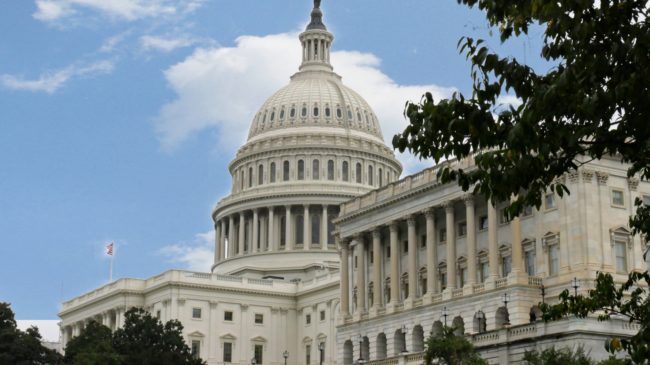Congressional legislation to address the economic effects of the COVID-19 pandemic seems likely to contain federal funds to bolster state and local government budgets, most of which are facing sharp revenue declines. The costs of federal support for state and local spending exceed the likely benefits, but unfortunately, that has not stopped Congress from spending beyond its means in the past. After more than $3 trillion in relief this year, if Congress does move forward with even more spending, it’s important that any support program not reward or encourage fiscal mismanagement in state and local governments.
Requiring states to provide spending data to taxpayers and increase transparency in order to get relief funding is one potential way to encourage fiscal responsibility during the pandemic and beyond. This idea already has attracted some momentum and could include commonsense financial transparency requirements.
At minimum, governments that receive federal funds should be required to report how the aid was spent at the line-item level. Did the money go to respond directly to the harms caused by the pandemic, or was it instead used to plug preexisting holes in pension systems? Taxpayers should be able to know.
Requiring this level of transparency is nothing new. When the Obama administration implemented the American Recovery and Reinvestment Act of 2009, it created a website called recovery.gov to show how the stimulus money was being spent. A descendant of this project, usaspending.gov, now provides details of all federal spending. Together with the work of a special inspector general, this transparency ensured that wasted taxpayer funds were kept to a minimum.
Many state and local governments provide detailed “checkbook” spending as well. A 2018 report from the U.S. Public Interest Research Group graded spending transparency websites for every state. Twelve scored B grades or better, with Ohio and West Virginia providing the best data — illustrating that states do not necessarily have to be very large or affluent to be transparent. Since the PIRG study appeared, one state that received an F grade, California, has dramatically improved its score by introducing its new Open Fi$Cal website.
Federal support should be used to encourage more state and local governments to follow best practices for spending transparency, starting with how any new federal funds are spent. But there is another reporting problem Congress also can help solve: tardy, infrequent, and opaque state and local financial statements.
Because the Securities and Exchange Commission lacks the authority to regulate them, municipal bond issuers’ disclosure practices fall far short of the standards enforced in corporate securities markets. Whereas an SEC-regulated corporate bond issuer typically produces a quarterly financial report within 45 days of the end of its reporting period, the average municipal bond issuer only reports annually and takes more than six months to do so. Some issuers take years to file audited reports (bankrupt Puerto Rico being among them).
A recent survey of audited financial statements by Truth in Accounting found that Illinois took 418 days to release its report. Seattle took 301 days. Some smaller entities take even longer than that: As of this writing, Compton, California, has yet to produce its 2015, 2016, and 2017 statements — although it recently published audited financials for 2018.
Public companies provide unaudited financial statements using SEC Form 10-Q each quarter. Some state and local governments provide interim reports, but there is no consistency or standardization across the public sector.
Not to mention that annual disclosures continue to take the form of voluminous, opaque, and inconsistently formatted PDF files more than a decade after the SEC embraced a machine-readable reporting standard for corporate security issuers. This format, known as eXtensible Business Reporting Language, is being used by companies worldwide as well as by local governments in Spain, Italy, and Brazil. As Will County, Illinois, demonstrated last year, it is possible for state and local governments to use XBRL as well — they just need the “will” to do so, or better yet, a kick in the pants from Congress.
Neither the SEC nor the self-regulatory Municipal Securities Rulemaking Board can do much to improve state and local government financial disclosure because they are expressly prohibited from regulating it. In the 1970s, Section 15B of the Exchange Act was amended to prevent these institutions from requiring state and local governments to improve their financial disclosure as a condition for issuing more bonds.
Submitting to the federal regulation of their financial reporting is a small price for state and local governments to pay in exchange for tens (or hundreds) of billions of federal taxpayer funds. If Congress, despite its own massive debt and deficits, insists on further relief spending, it should use the opportunity to compel aid recipients to open their checkbooks to public scrutiny. Taxpayers will thank them.
This column was co-authored by Jonathan Bydlak, director of the R Street Institute’s Fiscal and Budget Policy Project and creator of SpendingTracker.org. It originally appeared in the Washington Examiner.

